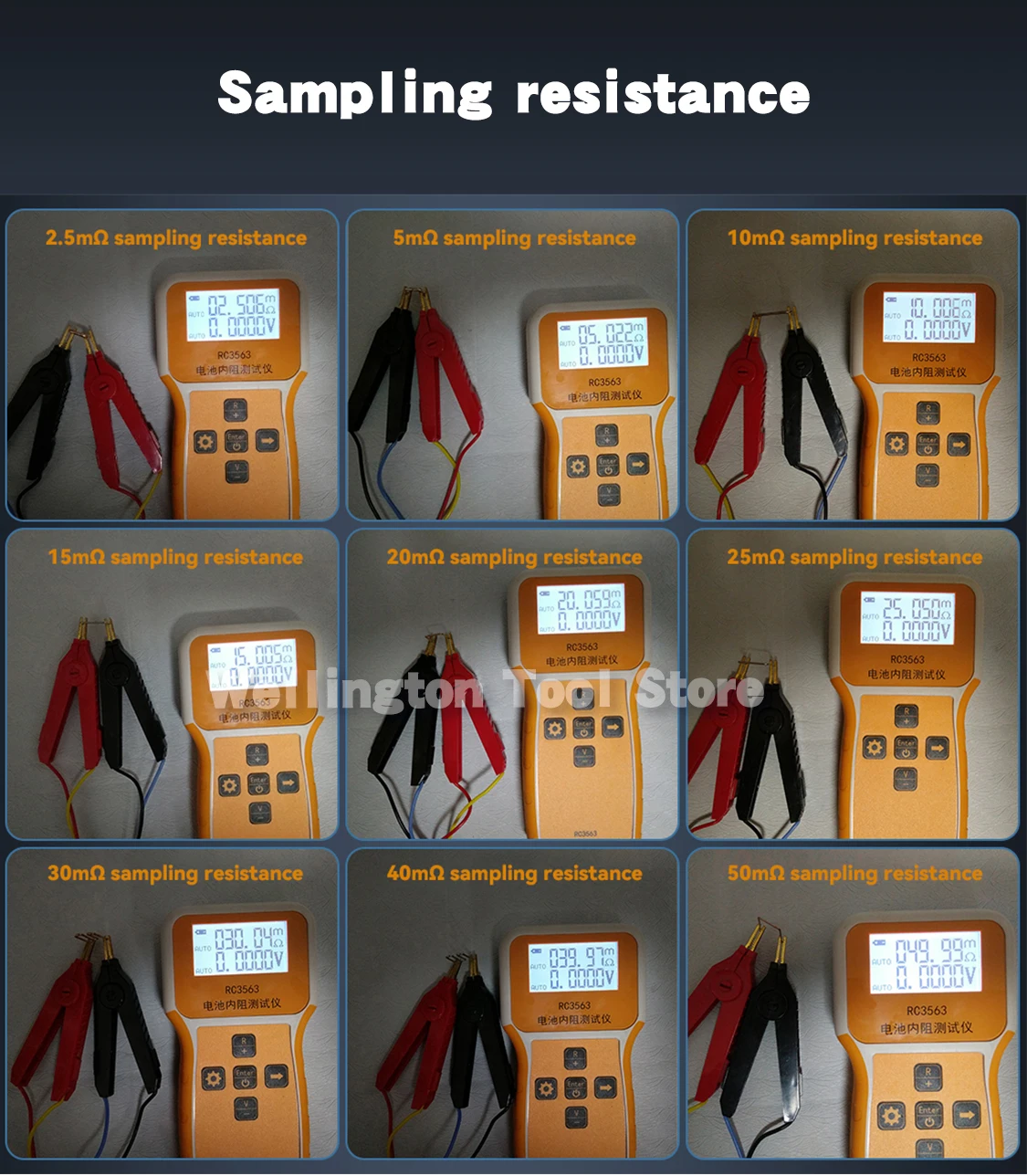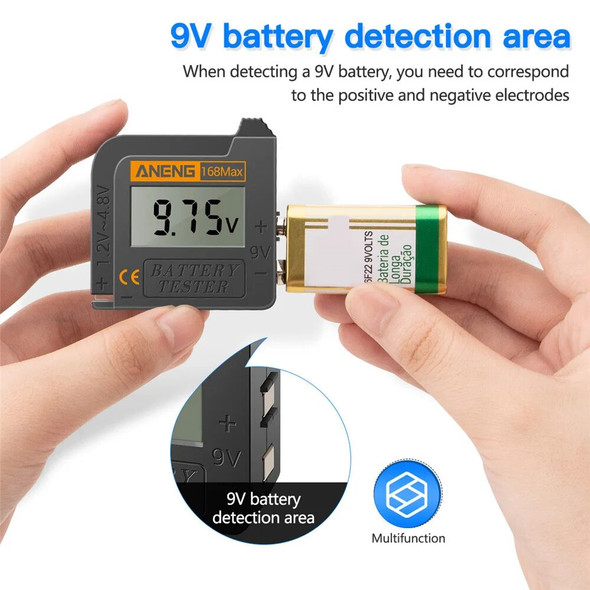Description
This product supports serial ports and computer software. If you need to connect to a computer, please leave your email address when placing an order, and we will send you the serial port driver and computer software via email.
In order to maintain the advanced nature of the product, product features will be slightly adjusted and updated, which will not affect the use of the features, without prior notice. If you mind, please do not purchase, thank you.
Product Features
The battery internal resistance tester can measure the internal resistance and voltage of the battery at the same time. It adopts a Kelvin four-wire test clip, which can better avoid the influence of contact resistance and wire resistance, and can perform more accurate measurements.
This product adopts intelligent control, LCD display, and implanted Kalman filter mathematical algorithm. It has the advantages of high precision, high efficiency, low cost, light weight, energy saving and environmental protection. Built-in 1000mAh lithium battery, 5V charging, Android mobile phone charger can be used, very convenient.
This product is widely used in various battery production, maintenance, testing, scientific research laboratories and other occasions. It can also be used to measure the AC resistance of capacitors and low-resistance high-precision resistance.
RC3563 battery internal resistance tester True four-wire AC internal resistance sorter Lead-acid lithium battery UPS test.
The measurement result is displayed immediately, and the response is fast and sensitive, without waiting.
The size of the instrument is moderate, suitable for handheld work.
The test wire is regular, the craftsmanship is good, and the design is reasonable.


Technical Index
Note: During the test, try to make the test leads or clamps parallel to reduce the influence of eddy current.
calibrated before shipment, and try not to make any other settings.
Test parameters | AC resistance, DC voltage |
Measurement accuracy | Resistance:0.5% |
Voltage:0.5% | |
Measuring range | Resistance:0.001mΩ ~ 200Ω |
Voltage:0.001V ~ ±100VDC | |
Signal source | Frequency: AC 1kHz |
Current: 20mΩ range 50mA; 200mΩ/2Ω range 5mA; 20Ω/200Ω range 0.5mA | |
Range | 6 ranges automatic and manual |
3 ranges automatic and manual | |
Test speed | 5 times/sec |
Correction | Resistance: each range is individually and manually calibrated without affecting each other |
Voltage: each range is individually calibrated manually, and does not affect each other | |
Factory settings | Save the factory information, one key can restore the factory state |
Energy saving settings | about 10 minutes delay, automatic shutdown without any operation |
Applicable scope | Cell phone, computer, electric vehicle and other battery maintenance, battery factory inspection and testing |
Show results | LCD display, direct reading |
Power supply | Built-in lithium battery, using 5V/1A charging |
Size | Length, width and height=166*80*28 |
Language | Chinese or English can be switched at will |
Key Description
1. Short press "enter key " to turn on.
2. Long press "enter key " to shut down.
3. Press the "set key" to enter the setting state, then press the "select key" to select different functions, and then press the "enter key" to enter the corresponding function.
4. Enter the resistance calibration/voltage calibration state. At this time, the test line should clamp the calibration resistance or voltage, press the "set key" to select the gear to be calibrated, and then press "+" and "-" to adjust the displayed value to be equal to the calibration resistance or voltage , Press the "select key" to select "ok" or "Cancel", and finally press the "enter key " to decide whether to save or cancel.






Frequently Asked Questions
1. Zero adjustment problem, the clip short circuit is not zero?
Answer: The short circuit of the two clips is not zero and there is x.xxxmΩ, which is a normal phenomenon. Only when the two clips are in perfect contact will the minimum value (it may be 0 or very close to 0). It does not matter if it is not 0. During the measurement process, the internal program has calculated the theoretical zero point, which does not affect the accuracy and does not need to be calibrated to zero.
2.Does the battery need to be fully charged for measurement?
Answer: The battery's full and depleted state will not affect the battery's internal resistance, and can be measured, with minimal changes in internal resistance (except for defective batteries).
3.The measurement result is jittery, inaccurate, unstable?
Answer: The test result is unstable. It may be that the test clip is in poor contact with the battery, or the battery under test is unstable, the electrode has an oxide layer, or there is a strong magnetic field around it.
4.The measured internal resistance is greater than the battery internal resistance?
Answer: When measuring large-capacity batteries (the internal resistance is very small), you must pay attention to the position of the clip during the measurement. The internal resistance of the battery electrode or connecting wire is often greater than the internal resistance of the battery itself. Pay attention to the position of the clip and make good contact.
5. Is it possible to measure xxxx batteries?5. Is it possible to measure xxxx batteries?
Answer: The instrument can measure any type of batteries, including lithium batteries, lead-acid batteries, nickel-chromium batteries, dry batteries and so on.
6.Why can the internal resistance be measured to judge whether the battery is good or bad?
Answer: The same battery will gradually wear out during use, the capacity becomes smaller and smaller, and the internal resistance becomes larger and larger. The smaller the internal resistance of the same battery, the stronger the load capacity, otherwise it will heat up or fail to move. The better the performance of the battery, the slower the aging, the worse the quality of the battery, the faster the aging.
7. What is the general internal resistance of an 18650 lithium battery?
Answer: The internal resistance of the new 18650 lithium battery is generally below 50 milliohms, the better is about 20 milliohms, the general is about 30 milliohms, and the worse is above 50 milliohms.
8.How much battery capacity can be measured?8.How much battery capacity can be measured?8.How much battery capacity can be measured?8.How much battery capacity can be measured?8.How much battery capacity can be measured?8.How much battery capacity can be measured?8.How much battery capacity can be measured?8.How much battery capacity can be measured?
Answer: You can measure batteries of any capacity, no matter how big it is, as long as the internal resistance is within 0-200 milliohms and the voltage is within 100V.
9. Can the internal resistance be measured online, and can the UPS power supply be tested?9. Can the internal resistance be measured online, and can the UPS power supply be tested?
Answer: It can be tested online without affecting the working of the battery, so the battery can be tested continuously during UPS maintenance.

































